Well, I finally got one. I had been wanting a Kindle for all those ridiculous 18 hour bus rides that become oh-so-inevitable on any sort of extended trip, because I have neither the physical capacity to carry a pack with more than a few books at a time, nor the mental fortitude not to be driven insane by having nothing to read on the bus.
But as I’ve been saying to those “I just like regular books” people for quite some time, there’s a whole lot more going on here than just extra portability. E-readers have a number of advantages, many of which are almost invisibly subtle (and thus rarely mentioned), all of which add up to make quite a compelling case as to why digital books can actually make you a better reader.
Yes, that’s right. Kindles and other e-readers aren’t just for literature fans. They’re also for those who want to become literature fans. Though it may seem like all they can do is make reading more convenient, this laziness enhancement is actually a life enhancement as well. With only so much time to read, you might never get around to reading what could have been your favorite book.
Digital books offer a number of advantages, many of which just speed things up, and since faster reading means more reading, it’s perfect for literature fans and aspiring literature fans alike.
Why e-reading is better than regular reading:
1) One-handed reading
One-armed people should have sued the book industry ages ago for discrimination, because reading a book one-handed (particularly when it’s a small paperback that often snaps itself shut like crocodile jaws) is pretty much impossible. Digital readers are much easier to handle:
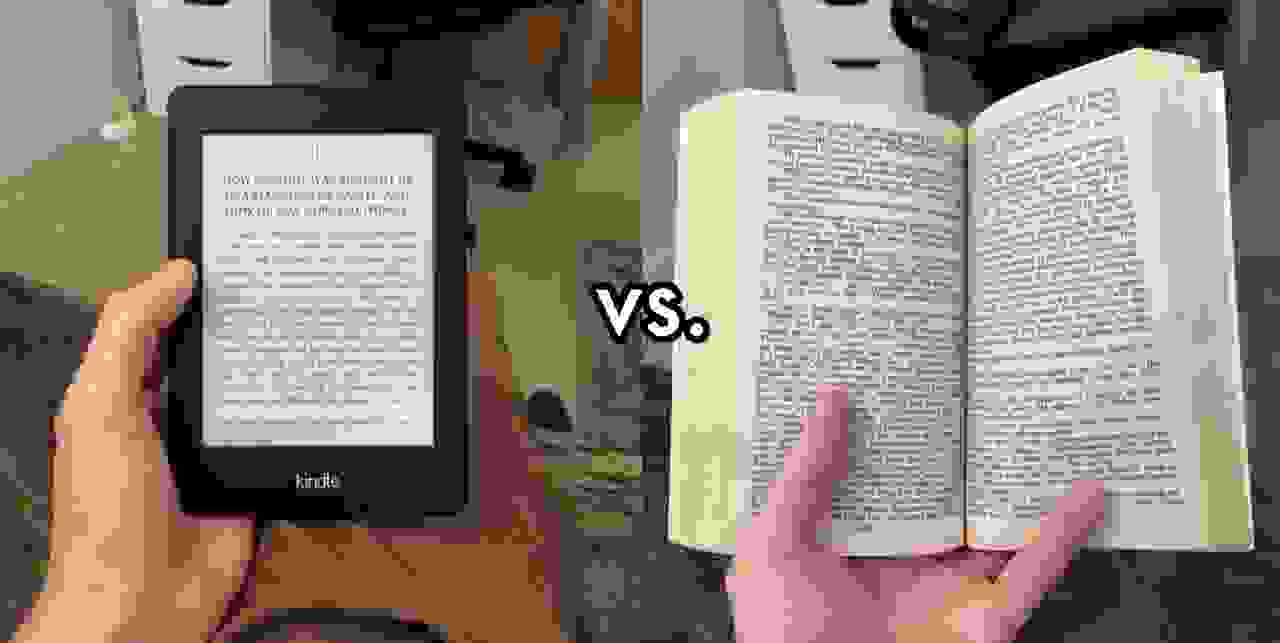
And it’s not just one-handed people that benefit from this ease of use. It’s also lazy people who want to hold a cup of coffee in the opposite hand that stand to gain something. Not only does it allow you to keep one of your hands free, but it also means the book stays open more easily, and you don’t block the view with your fingers all the time.
And there’s an ancillary benefit as well:
2) You can read on your side
This has been my dream forever. To be so tired and lazy that I literally can’t even shift myself into an upright position, and yet still I can blaze through classic works of literature and appear to be a productive person. I cannot express how much I adore this feature.
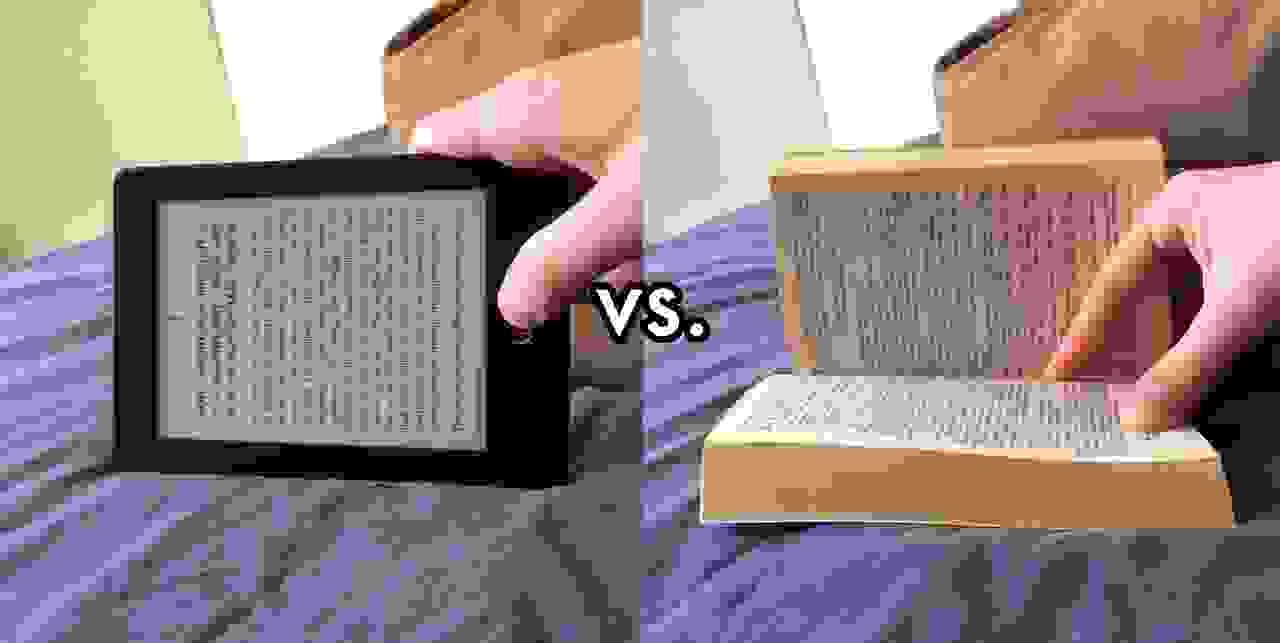
With a regular book, it’s not all that convenient reading that “other” page, and no solution I’ve found works as well as just using an e-reader. There have already been many times when I’ve been lying in bed in the early morning, still lacking the mental and emotional capacity to start the day, but somehow too alert to fall back asleep…which is perfect side-read time. I can get through maybe another dozen pages each morning and night this way.
3) Lower edge bezel visibility boost
This is the great unsung hero of e-reader design, which very few people bother to think about until they get one.
The lower edge is actually quite oversized, which may have been just because they wanted to make room for the logo, but this extra space also eliminates the blocked lower lines that occur when you’re reading a regular book, and you’re lying down on your back like this:
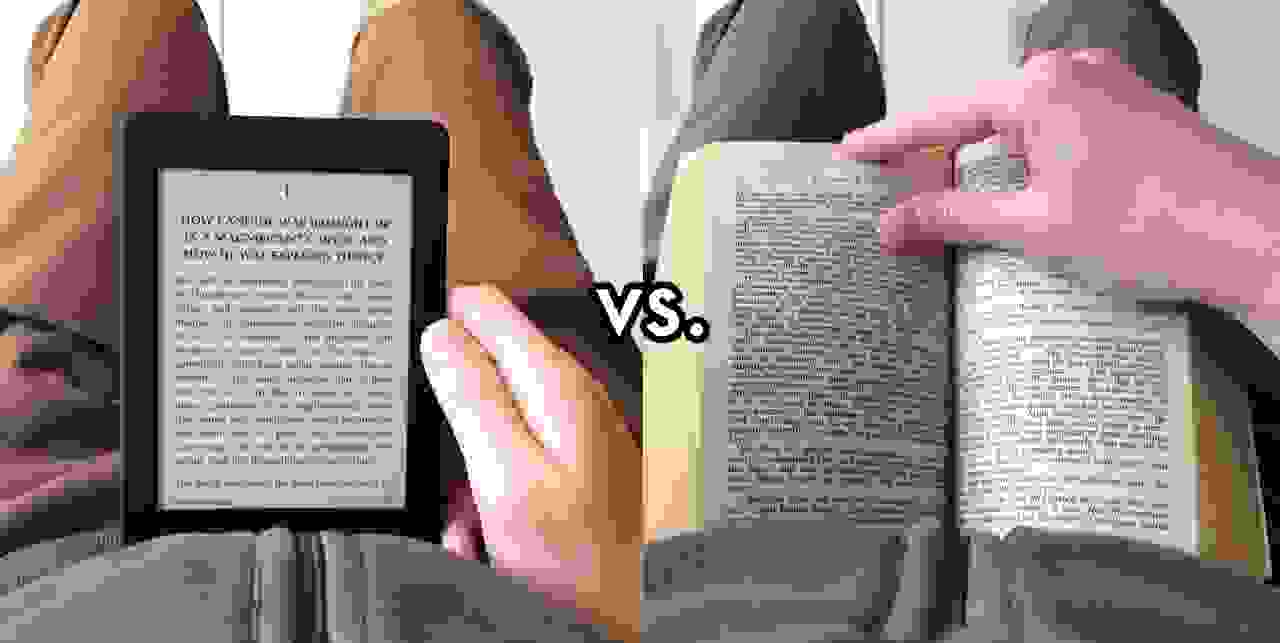
Depending on the margins of the paper book, several lines can be made invisible this way, which means you have to keep lifting up the book or shifting around to see them, which doesn’t happen with (well-designed) e-readers.
4) No page curvature
Pages curve. Screens don’t. This means an e-reader allows you to focus more easily on the words, which remain at a fairly uniform distance from your eyes, whereas an open paper book will sort of arch toward you in the center, while the inner and outer edges curve away from you…it’s a subtle difference, but one which occasionally requires repositioning the book for greater visibility, or constantly refocusing your eyes to accommodate the constantly-varying focal distance.
It might not even be something you really notice, but it’s likely to wear your eyes out more quickly. This is often the case with large paperbacks, which usually have floppier pages.
But there’s another bonus feature here as well. The worst problem with page curvature is when the words go so close to the spine of the book that you can barely read them, which is just incredibly stupid, because they could just add a tiny bit more space and it would all be okay.
But no. We get things like this:
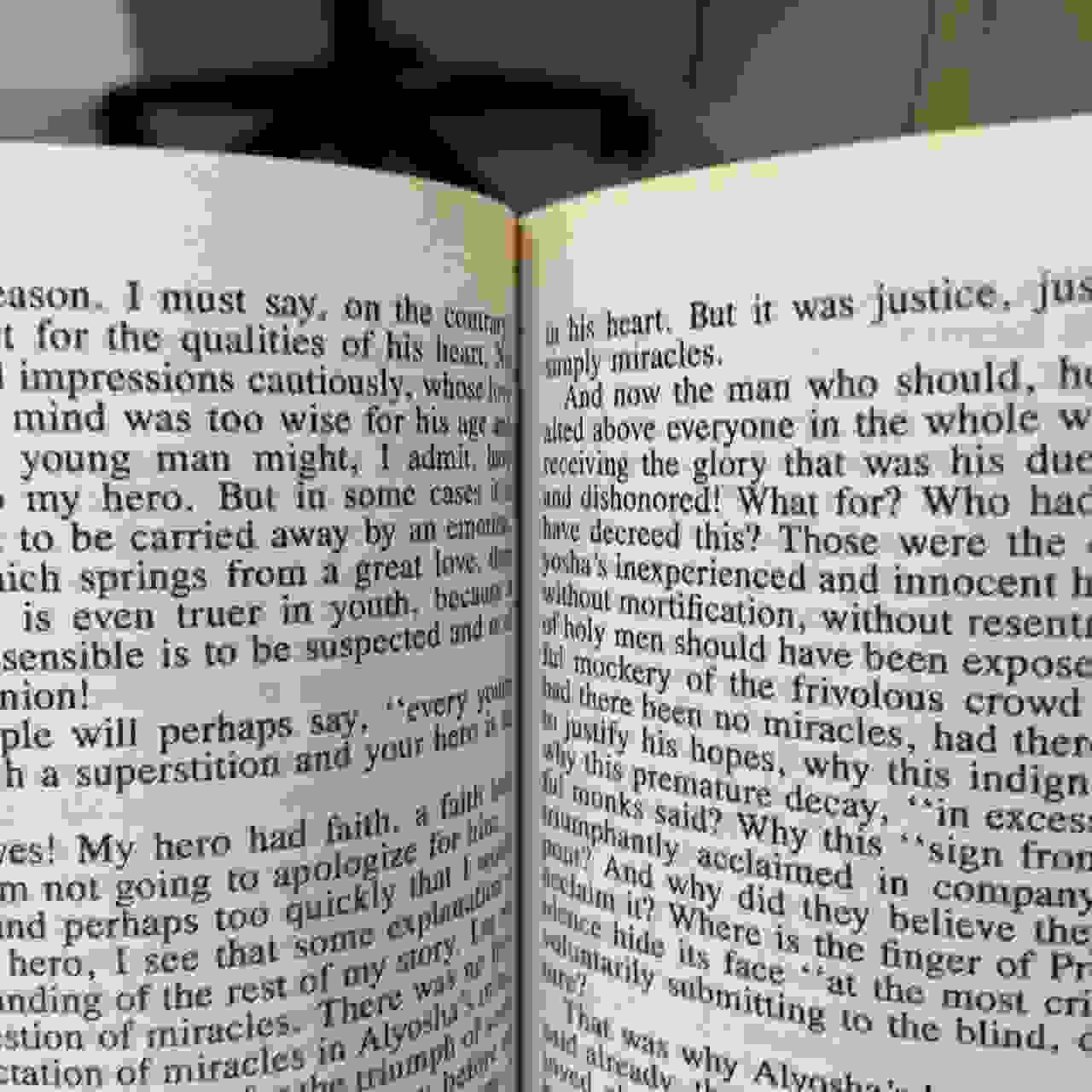
By the way, that’s as far as I can open the book. It’s literally pulled open as much as I could possibly manage without breaking something, and I can barely read it. Why do they do it this way?! Argh!
Ahem, moving on.
5) Font options
As far as I’ve noticed from the few e-readers I’ve borrowed, not many people make use of this feature, which I think is a missed opportunity. Typography preferences can really speed up the reading process, by allowing you to customize the appearance of the text to suit your needs; line spacing and font size can be immensely useful for people with bad vision, and choosing a more readable font is only going to make things more pleasant anyway.
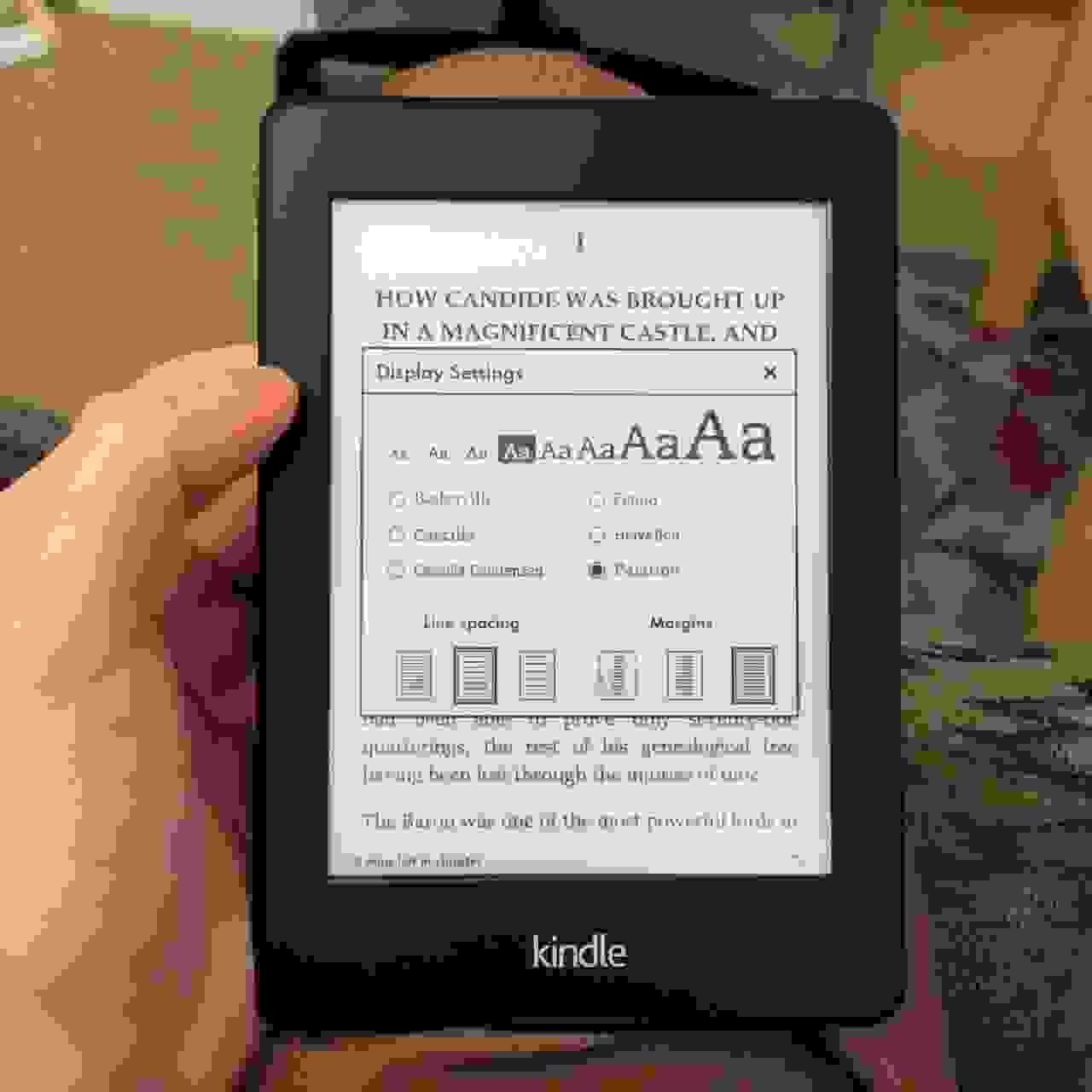
There aren’t really that many options on the Kindle, and while I don’t think it’s necessary to have lots of fonts, it currently has only six options…two of which are sans serif, and one of which is merely the condensed version of another one, both of which look weird to me, which leaves only two font choices that actually look like what you’d find in a real book. I’d like to see at least a couple more.
6) A dictionary!
Click on any word, and you’ll get a dictionary definition, a Wikipedia entry, and sometimes more. It is immensely useful, particularly for younger readers and foreign language students, but also for adult native speakers; imagine reading an older text full of antiquated terms, for example.
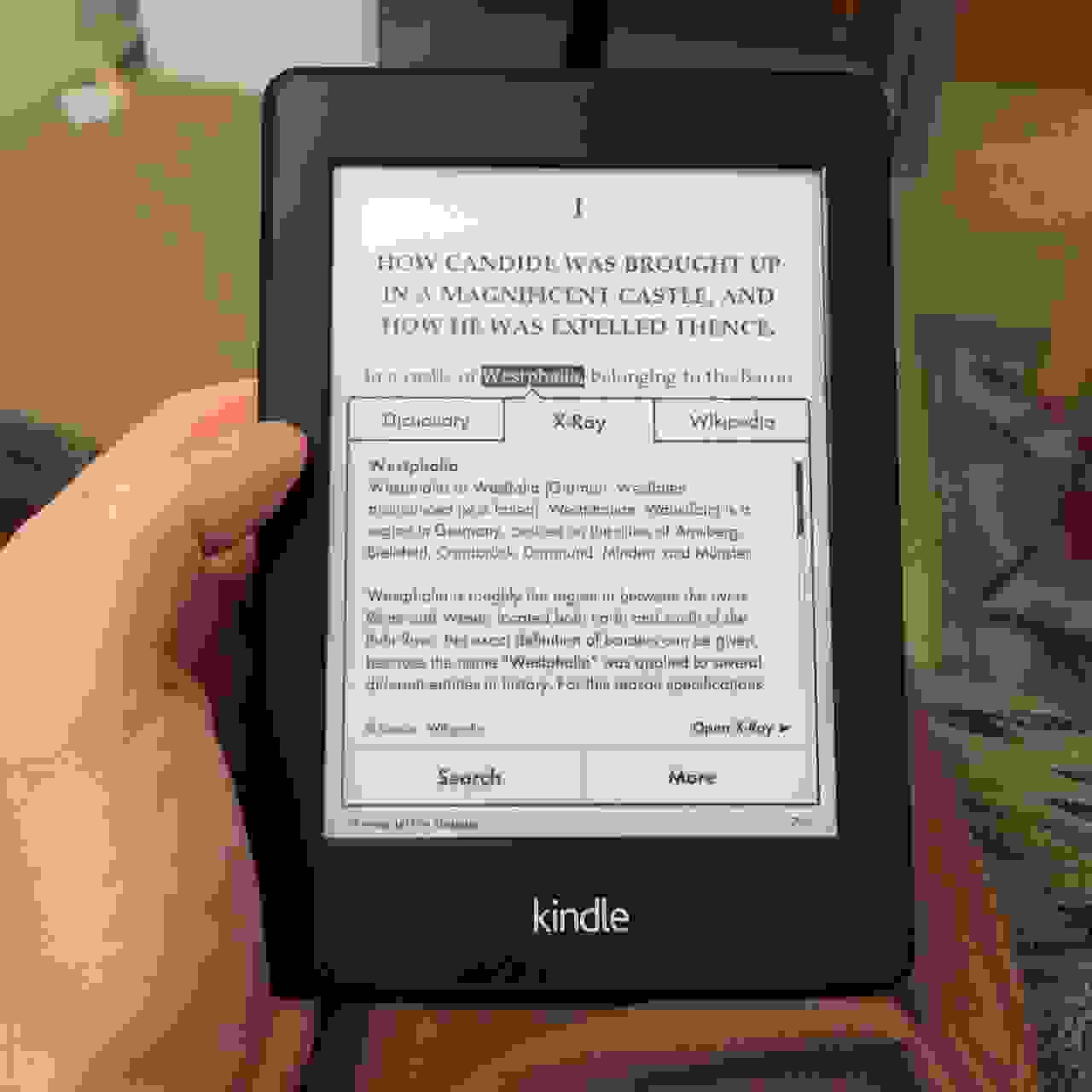
Reading is often a great way to build vocabulary, but not if you don’t have a dictionary. And even if you do have one…even if it’s right in your phone and you have access to it at all times…you might just not bother doing it. But when all you have to do is click on a word, you might just end up doing it every time, and you’ll build new vocabulary a lot more quickly than “hmm, maybe I’ll look it up tomorrow or something.”
7) You can read in total darkness
Not that you’d want to read in total darkness (although you could), but the lighting in e-readers such as the Kindle Paperwhite, Nook Glowlight, and Kobo Glo also allow you to read in low light, which is useful in all sorts of situations.
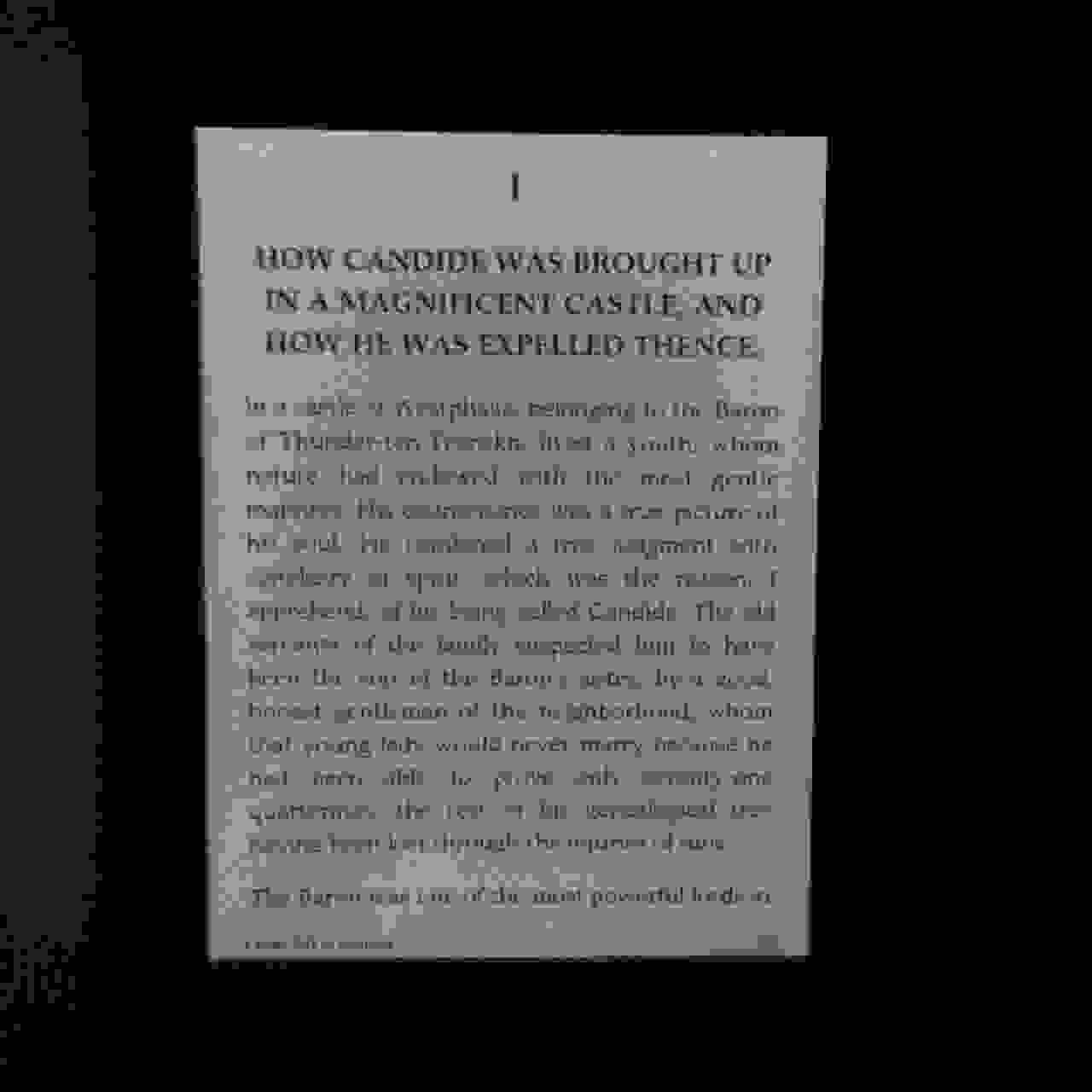
Overnight flights, buses, and train rides, as well as any sort of shared room, after the lights are off, are all good examples of places where you might want to read, but wouldn’t want to switch on a lamp and annoy everyone. You could use a head lamp or an attachable book light, but it’s obviously better when the screen light is just always there.
And since the screen is illuminated by lights placed along the sides of the screen, the glow is more pleasant than smartphone or laptop screens, which emit the light directly at your eyeballs. My eyes don’t get tired reading on a Kindle, but it happens rather quickly on a phone, depending on the lighting in the room.
8) Free samples!
With every book I’ve seen so far, it’s possible to download a free sample, so you can get the first chapter or two, and evaluate whether you’d like to buy the whole thing. Half the books on the screen below are sample versions:
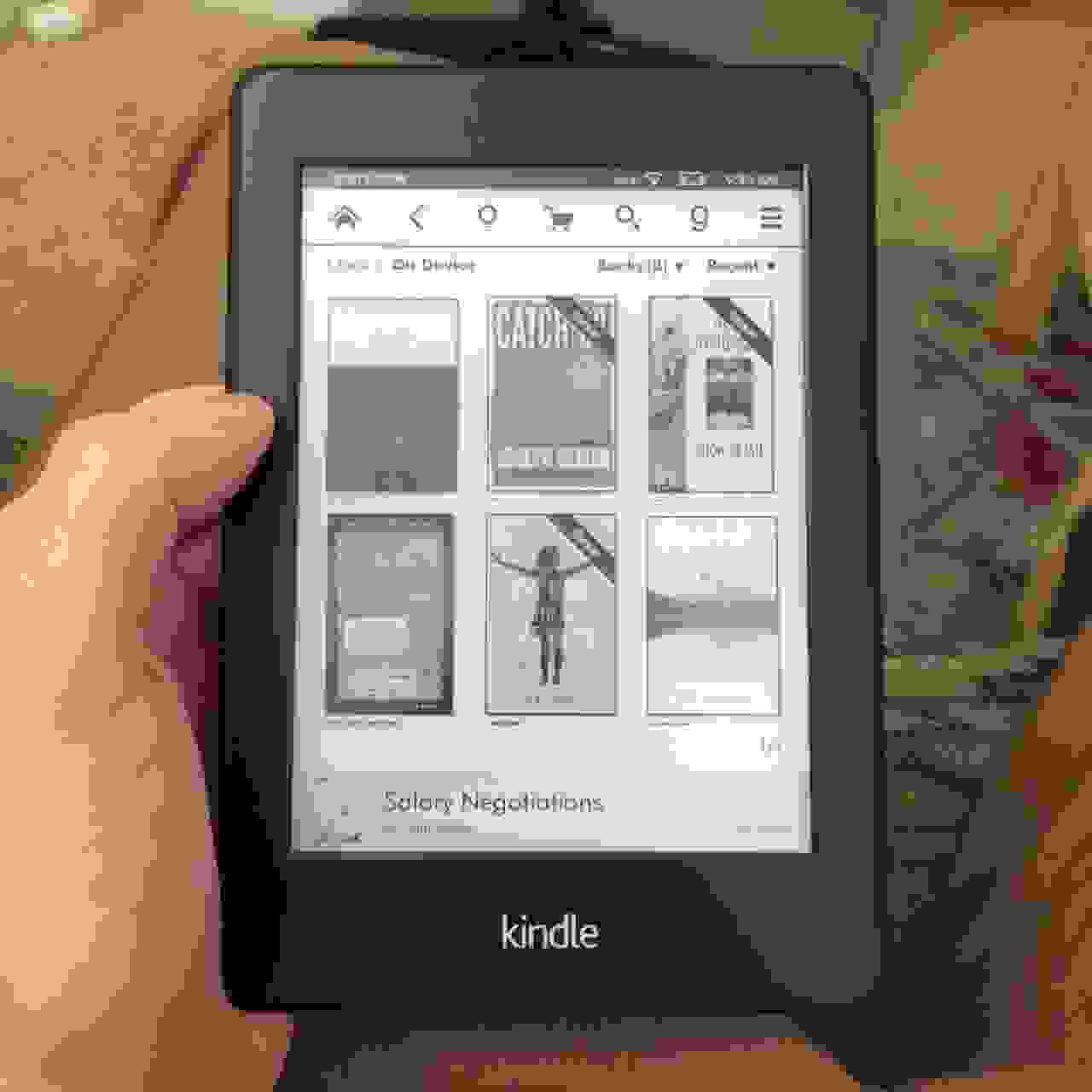
I cannot express how critically important this will be for the publishing industry. Free book samples have basically been impossible for the entire length of human civilization, and now publishers can feed people instant free samples and get them hooked on new stories and new characters, without the reader having to buy a $35 hardback just to see if they like it.
Much like the music industry uses hit singles to encourage people to buy the full album (at least in the days before streaming music sites and so on), publishers will be able to get more books into the right hands by finding people who would be interested in a particular book, but otherwise would never have known how good it was. This is actually such a big deal that I was thinking of writing an entire article about how the publishing industry needs to take advantage of ebook distribution models, but I expect that would be so far off-topic that it’s not entirely appropriate here.
I will say, however, that the samples should be much longer. They’re usually the first 10 or 20 pages, but they really need to be the first 50, or even 100. You know how much of a free sample a drug dealer gives potential addicts to convert them into repeat customers? Enough to get them hooked. Publishers need to give readers enough of a sample that they become emotionally invested in the plot and characters, and just have to find out what happens, and the first 10 pages just don’t cut it.
9) Free classics
Everyone loves free things. Seriously. If you look at the popularity of books with expired copyright, you’ll lament the near-invisibility of books written in the 30s and 40s, which suffer a huge sales drop-off. They’re too old for people to talk about anymore, but too new to be freely available, like 19th century classics.
But, until we figure out a way to deal with that, we do have free classics from before the copyright cutoff date, which generally means anything before the 20th century.
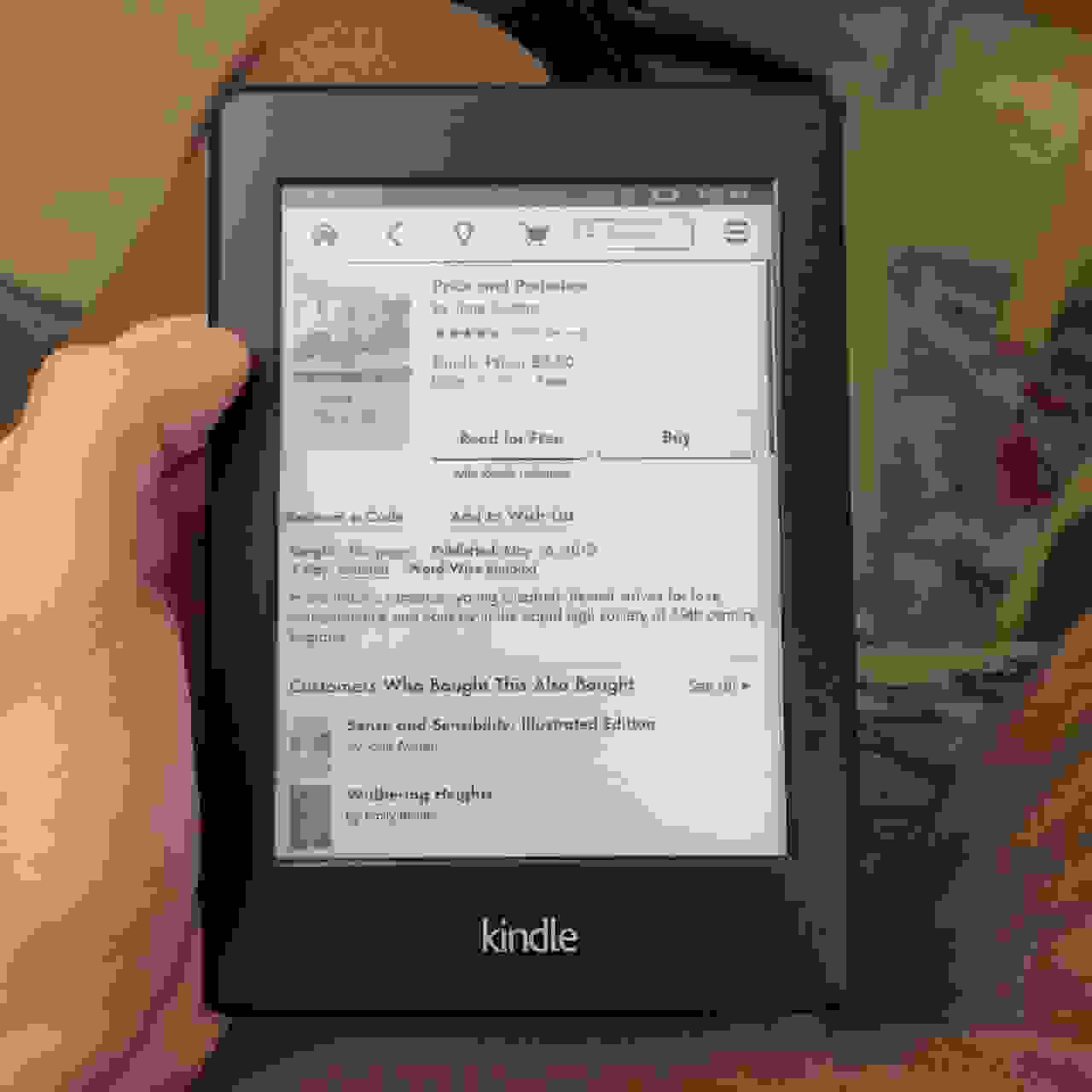
Zero dollars is my favorite number of dollars, and an e-reader is a great way to catch up on the classics, particularly with that aforementioned built-in dictionary, which will help with outdated terms from ages past. It’s also a great way to offset the costs of buying new digital books, which…stupidly…aren’t as cheap as they should be.
10) More portability (and accessibility)
Okay, here’s the obvious one:
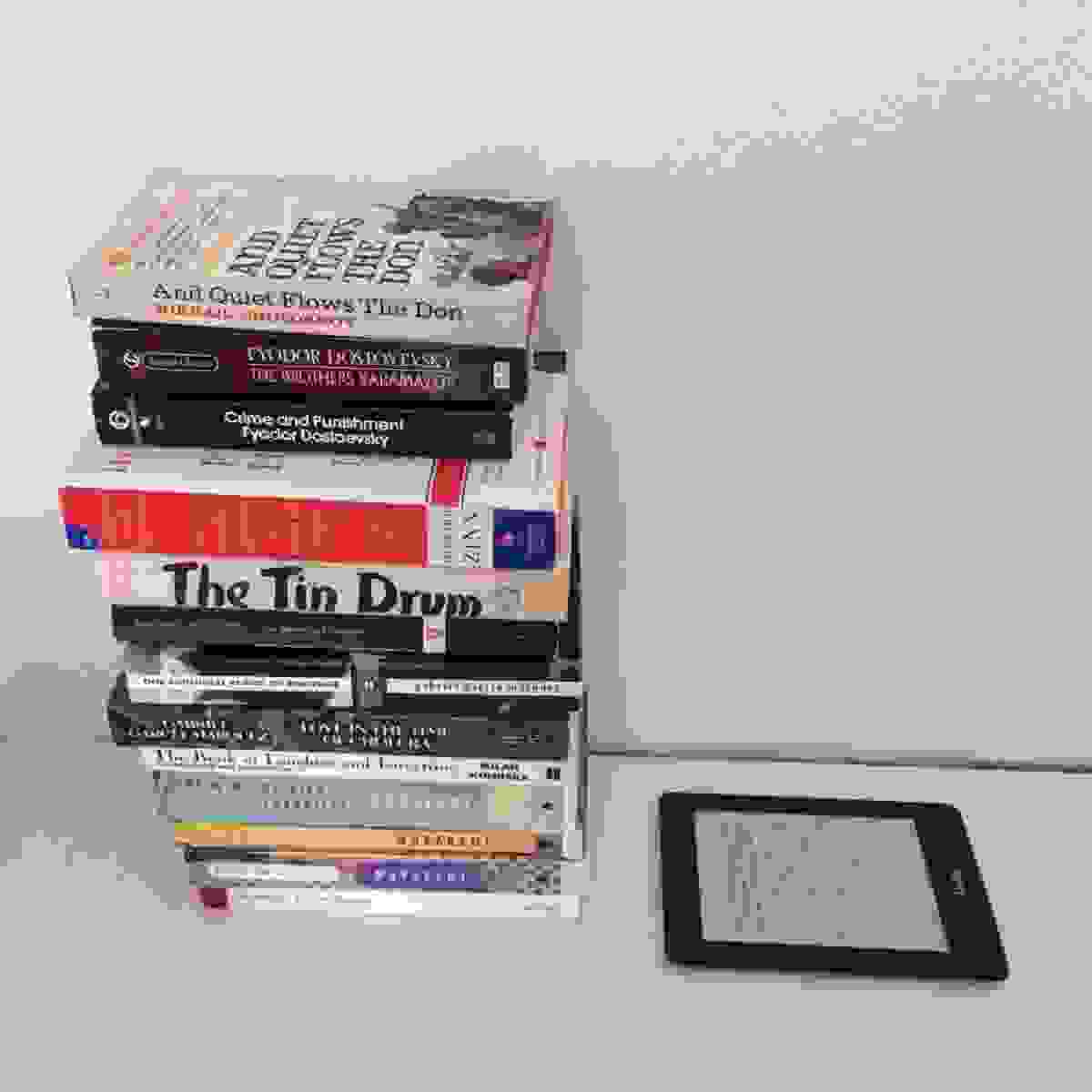
This is extraordinarily useful for voracious readers who also like to travel, without much to weigh them down, but also for people with tiny apartments and limited storage space.
But an e-reader’s storage capacity isn’t the only useful travel feature; it can also download new books over Wi-Fi, which means you won’t have to patrol the streets randomly in search of English-language bookstores, which happens to me far more often than I enjoy.
Apple has made an excellent (if somewhat controversial) point about the iPhone, proclaiming that the best camera is the one you always have with you, because a decent photo is better than no photo at all. And although I’m a pretentious English major and thus disagree with “a decent book is better than no book,” I fully endorse the greater access to literature that e-readers provide. Getting a constant flow of great books in front of my eyeballs is wonderful, and those damn 18 hour bus rides aren’t going to be nearly as annoying from now on.
How it all adds up
Digital books are actually such a big deal that I could talk about them all day, and it’s not just readers who can benefit; if digital books are ever leveraged as efficiently as they should be, they’ll have the capacity to enhance the entire literature landscape, benefiting readers, authors, and publishers alike. We’d be able to get more books into the right hands at a lower cost, thus benefitting everyone. It’s going to be great.
But here I wanted to focus just on the advantages from a reader’s perspective, some of which are not immediately obvious; and although the above advantages may seem rather small, they add up rather quickly, to the point that you can simply read more books with a Kindle than you could otherwise.
Counterarguments are numerous, and valid; some studies show that although speed is higher with digital books, retention is lower; that’s rather troubling, but in plenty of ebook situations (being able to look things up in the dictionary, for example), retention would be higher.
So all you “I just like books” people out there…regular books are just fine, and rest assured, they’re never going away. But if you feel like you’re just not reading as much as you’d like, give an e-reader a try.


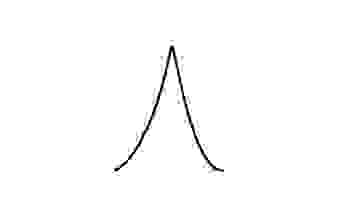

I hear you, I do, but I still prefer the feel of a solid, decrepit page turner in my hand over an e-book. Plus I usually want to read during take off and landing, and you can’t use a Kindle during those times! Also there’s the social aspect… a book with the cover turned out is a conversation starter for lonely travellers in hostels all over the world. A Kindle, not so much! To each his (or her!) own though. Here’s my thoughts: http://takingtotheopenroad.com/e-reader-v-s-paperback-which-do-you-prefer-for-reading-on-the-road/
There are definitely some pros and cons, and neither way is perfect. I got a Kindle because it was inevitable for those long trips, but was happy to confirm that it just speeds up the reading process. But, of course, there’s the tradeoff of not being able to build a home library so you can lend books to friends, among others.
You can use devices tablet-sized or smaller during take offs and landings now =)
I find that electronic books have expanded my reading options. A friend will mention an excellent book and I’ll download it. I’ll hear an interesting segment on the radio about a book and I’ll download it. I find I’ve explored genres that I previously hadn’t considered. It’s all because it is so easy to download a book Vs. search it out at a bookstore.
yeah,while they are good but you need to know that we are wasting trees and that is a good prossess right? apperently beacause i dont see any of you sticking up for trees!!!!!!!!
STICK UP FOR THE TREES!!!!!!!!!!!!!!!!!!
Excellent post, all good points.
Having a Kindle has changed the way I look at my commutes, and made traveling a lot more pleasant. And of course, using an eReader doesn’t mean you have to abandon paper books; it’s not a one-or-the-other proposition.
The question about retention is interesting. I’d like to see one of those studies that differentiates between reading on a tablet or computer screen (the kind that flickers) vs. an eInk-based screen.
I think the specific studies I’ve seen so far were talking about regular computer screens. A lot of people have proposed that iPads and similar tablets could be used instead of textbooks, so kids wouldn’t have to carry around a ridiculous amount of weight all day, and the lessons could also be interactive, with built-in quizzes and videos, and they could be updated regularly. One of them also found a difference between liberal arts and math/science, finding that one works well with regular textbooks…which I think was liberal arts, but I forget…and the other works better with tablets. I think the tactile feedback and three dimensional object manipulation of a regular book can stimulate your brain a little more, so there’s more retention, but if you supplement a digital text with interactive elements, I expect the tablets could win. And of course none of this has anything to do with e-ink vs paper, as I haven’t come across studies comparing the two yet.
I agree with the benefits, but I prefer PDFs with actual pages over the ebook format. Sure, you can change font sizes and styles with an epub, but for me, I love the page. A real set-as-intended-page.
My solution is to use an iPad with GoodReader (has some nice contrast options that go easy on the eyes) and buy books cheap. Then I put them through a document scanner, reduce the file size and OCR with Acrobat. Takes about 5 to 15 minutes of work per book (but destroys the book in the process as you have to cut off the spine to get the separate pages) but it provides me with books to read. Books I own, books without DRM, books I can keep for a very long time (well, as long as PDF is around). Main advantage: You can highlight beautiful quotations and later export the highlighted text via eMail. Not the best solution but one that works for me.
It’s interesting to read your thoughts on this – I too am I reluctant but now-avid convert to ebooks while traveling, although I opted for a small cheap-ish tablet computer (Nexus 7, 7″, US$200) instead of an eReader. I used it heavily on a recent 3 month, 6 country jaunt through Asia.
Some notes: “Kindle Unlimited” from Amazon allows access to much fiction and non-fiction for a fixed monthly fee. This includes many popular guidebooks (love ’em or hate ’em), which saved a ton of space and weight in my luggage. While I do prefer the experience of a printed book, convenience is the trump card here.
Many libraries now lend eBooks. My local library kept me well-supplied with fiction during my trip.
As far as tablet instead of eReader, it was a extremely useful having Internet access for researching and booking accommodation, transportation, tours, etc. While some of that can be done on a smartphone, I’ve done my time with those squinty little displays and keyboards (and have found that many foreign websites don’t work well with mobile phones anyway).
Great post. Don’t forget highlights though!
You can highlight favorite parts as you read and (with some 3rd party plugin hassle) export all the snippets and start a book summary blog post, save for later, etc. highlights rule! (Wish I could have said underlines rule)
I’ll always love books. But for all 10 reasons, plus it’s just plain FUN to use a Kindle, I now love digital reading too! Thanks for a really great article!
more convenient, but… a book is still a book ;)
I love real books too but for lightweight traveling, they are pretty limited. So what can I do to save weight?
I had a Kindle and liked it. It was portable, light weight, and carried a lot of books. What I didn’t like was that it didn’t fit into my preference that the things I carry with me do multiple tasks. So, out with the Kindle and in with the iPad Air.
The iPad Air was able to do more things, primarily Internet related and reading, but it was still limited and too heavy for someone that likes to travel super light. So, Out with the iPad. That left me with a dilemma. How do I read while on the road?
At the same time the iPad Air was leaving, the iPhone 6 Plus and the Samsung Galaxy Note 4 appeared on the scene. I checked them out and both screens were large enough and crisp enough to easily read ebooks plus they did a lot of other nice things like make phone calls, check email and surf the net, play a few games, and have lots of useful apps. On most things, the two of them were pretty evenly matched so it came down to practicalities.
The Note 4 won out for a few reasons, one of which was the slightly larger screen. More importantly though was the user replaceable battery and the use of the non-proprietary microUSB charging cable. The replaceable battery is very helpful when you are traveling and there is not a power outlet available. You’d be amazed at how many airports have made it almost impossible to charge your phone. As for the charging cord, there are places I travel where your chances of finding an Apple Lightning adapter are slightly less than finding the Holy Grail, but I have never found a place where I couldn’t find a microUSB adapter. Why? Because most of the world’s phones use them.
So, now I have gone from two tech items – phone and pad – to one item that lets me communicate (phone/Skype/Internet/email) and entertain myself (videos/audio files/ebooks). The change saved me considerable weight, not to mention the $300 extra that the iPhone 6 Plus would have cost.
By the way, this is not a slam on iPhones. They just weren’t what I needed for the way I travel.
A lot of people are getting bigger phones because it makes a laptop unnecessary, and I’ve thought about that too, but I really like to read late at night, and the e-reader screen works so well for that. Plus you don’t have to worry about draining the phone battery while you’re reading on an e-reader. I might switch…if those two problems can be solved. But in the meantime, I like the phone + e-reader combo, but it’s not necessarily the “correct” answer, especially for daytime readers with spare batteries.
I really like having a kindle for reading in sunny conditions like walking where I need to go and using public transit. It’s light, capable of one handed operation, and it’s ability to store countless choices of which five can come from my library (and many libraries that have online selections you can access with a library card), and the independent battery make it my go to way to read material. I even enjoy laying on my side and reading much more. However, some of the texts I most wish I could pack are large picture books of reference material that require a large page to properly display words and graphics. My preference would be in color, but I could live with black and white. What I have trouble with in the end is not being able to flip through the book. It’s far too involved a process to bookmark every little thing that could be connected to another thing in the book that I’d like to look at back to back. The alternative is getting close via bookmarks or the table of contents and then going back and forth to find something with the page turning buttons. Fiction and entertainment are great on a kindle, but design books on permaculture and architecture, or dense bodies of knowledge one hasn’t read a hundred times before are not meant for the kindle as far as I can tell. Am I missing something obvious? What do you think?
I think you’re right. I expect graphic books would work better on a tablet like an iPad, and they’d also be more responsive to some sort of page-flip simulation. Those slider bars that allow you to quickly move around the pages work fairly well. It’s not perfect, but it would at least help out quite a bit. Fiction you plan on reading only once works a lot better.
I love paper books as well, and so will continue to buy hardback first editions by my favourite authors and to idle away my hours in second hand bookshops looking for oddments that grab my fancy. Having said that, I am also a big fan of being able to carry 400 books in the leg pocket of my cargo pants, read at night without disturbing anyone else and shop for books while sitting on the toilet, all of which mean that my Kindle is my very favourite possession.